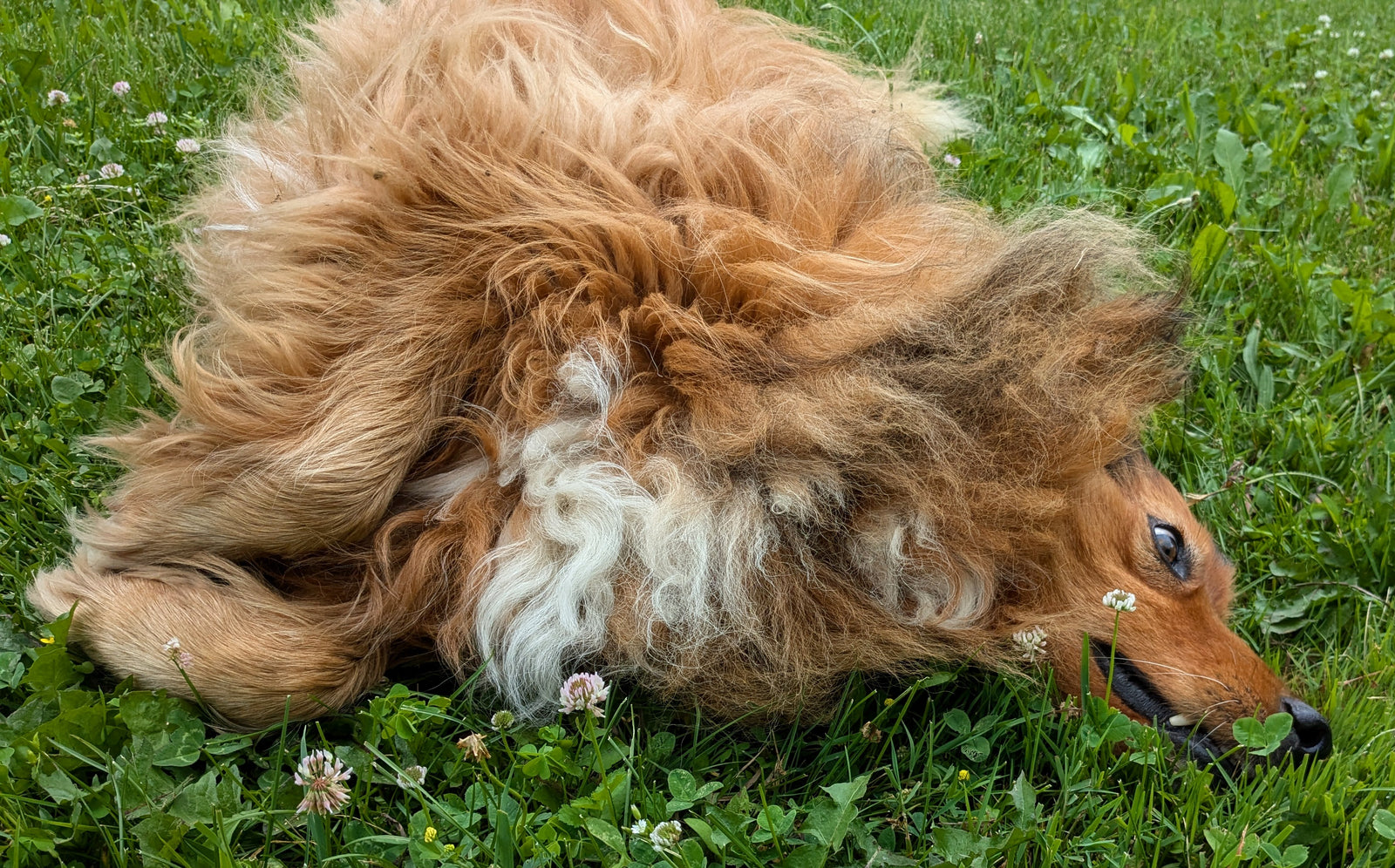My son Ellis has recently acquired a book about dogs. In addition to numerous stories about notable canines through history (which the book calls “Top Dogs”, of course) it discusses the history and domestication of dogs more broadly. As is so often the case these days, this has Ellis thinking.
“I’m happy Oban isn’t overbred,” he said, referring to our English Shepherd.
“Well,” I replied, “I’m not so sure about that.”
Like so many aspects of our relationship to animals, overbreeding is a bit of a fuzzy concept, in Oban’s case literally. He has a frankly hilarious amount of fur, hilarious, that is, right up until the moment he gets it tangled with burrs or rolls in the mud or encounters a skunk. Even in the best of times it has a propensity to form mats, and on hot days he has to take regular trips to the stream to stay cool. It’s far less debilitating than something like congenital hip dysplasia, but it’s still not ideal, for us or for him.
More seriously, he had a rare type of kidney stone several years ago. While English Shepherds are an uncommon breed, meaning there’s little reliable information about their propensity for health issues, I would not be at all surprised if his ailment is indicative of a broader problem.
And this is despite the fact that English Shepherds benefit from being working dogs, at least some of them. Unlike show breeds, the physical standards are very relaxed, with temperament, general health, and behavior take precedence. But problems still creep in, most fundamentally the influence of a few great dogs on a limited population. The nature of recessive genes is that a short term gain may be sowing the seeds of long term troubles.
Take a step back and our fascination with historical breeds looks a little strange. We still categorize them by the jobs they no longer do; most retrievers never swim after a downed waterfowl, most pointers never flush a grouse, most hounds never follow a scent trail, most terriers never kill a rat. Though these capacities certainly linger, they are as much story as fact. They convey respectability, as if a historical purpose somehow justifies continues existence.
But breed histories are also of interesting because they point to the contingent nature of our dogs. Humans saw a need, whether herding, hunting, or guarding, and selected the dogs best suited to it. Generations passed, and a breed emerged. As the need for working dogs waned, aesthetic considerations came to predominate, and breeding became more deliberate and more divorced from general health and soundness. It became a reflection of human whims above actual purpose.
If you, like me, are a dog lover, you might think that’s unfair. Of course dogs still have a purpose. They are incredible companions: funny, enthusiastic, comforting, happy. I completely agree with this, which is why I say our collective fixation on breeds looks so strange. Very few of us need to dogs to hunt rodents or track wild boar, or look a particular way. All we ask them to be is good companions. Yet this freedom has been bad for dogs.
In theory, the move away from functional duties should have allowed the proliferation of dogs with excellent health, temperament, and companionability, a high tolerance for stress and an enthusiasm for humans. Who needs a wolfhound in a land without wolves? Instead, we have largely stuck with historical breeds, the appearance of which has become ever-more exaggerated as the need to do a job has receded.
I can’t explain why this should be the case. It seems to me there would be a sizable market for biddable dogs that generally required little attention from the vet, loved people, and didn’t require hours of exercise every day, even if their looks varied.

